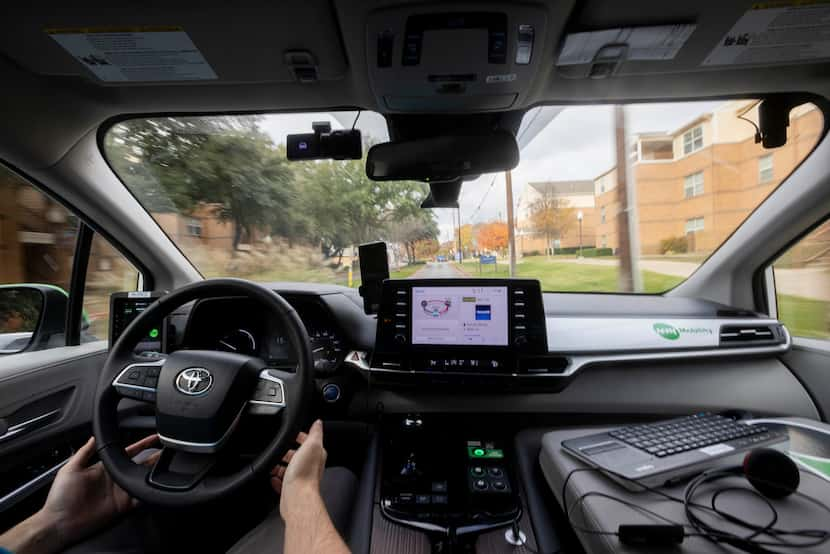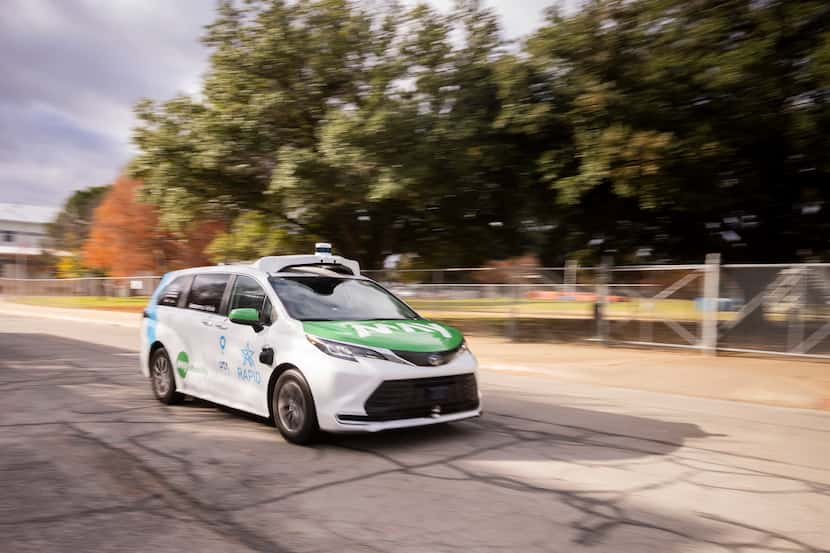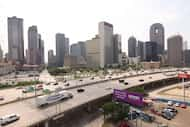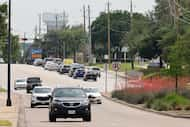Dreams of autonomous vehicles in downtown Dallas seem further away than ever after General Motors’ robot-taxi unit, Cruise, stumbled out the gate when its CEO stepped down after its cars were pulled from Dallas roads in late October and GM pulled its investment.
But where Dallas is falling short, its neighbor to the west is picking up the slack. Through Arlington’s Rideshare, Automation and Payment Integration Demonstration Program, the city has implemented AVs from downtown to the University of Texas at Arlington’s campus fueled by Ann Arbor, Mich.-based AV company May Mobility.
The Midwest AV company launched its services in Arlington in March 2021, intending to warm people up to the idea of AVs sharing the same roads as cars with drivers, said Rob Carter, May Mobility’s customer operations manager.
“I just encourage people to take a ride themselves and see how they like it,” he said. “I was working in business, and I took a class in self-driving technology while I was working out of school and I got interested in what was next in the future of automotive. I hope this piques people’s curiosity, too.”
May Mobility’s fleet of four Toyota Sienna minivans uses the company’s multi-policy decision-making technology on its predetermined route network during each ride. It means the vehicle’s seven cameras and five sensors are helping run thousands of simulations on familiar roads to choose its next move.
May Mobility originally had a fleet of four Lexus RX 450h SUVs and an electric Polaris GEM, but moved to Siennas in 2023 after it closed its Series D funding round, which netted the company $111 million. NTT also backed May Mobility with a $75 million investment last month.
On average, the company sees between 150 to 200 riders per day, with most of them being UTA students, Carter said. According to the company’s latest estimates, May Mobility has given approximately 45,000 rides since it launched.
For UTA students and staff, the program is free. It costs $3 per ride for anyone else. People can use May Mobility’s app Monday through Friday from 8 a.m. to 8 p.m. to book a ride.
Unlike Cruise, May Mobility isn’t operating on a typical commercial model. Instead, it’s benefitting from its $1.7 million grant from the Federal Transit Administration and its partnership with the university, the city and New York City-based Via Transportation, which powers the company’s app.
In turn, May Mobility doesn’t have to scrape together money from its fares to turn a profit, Carter said.
“We operate off grants. We’re not actually collecting the fare,” he said. “Via is helping with the app, and the fare goes to the city. Our business end is operating as public transportation through local or federal funding, depending on the different types of grants that are available.”

Arlington’s infamously poor public transportation system is one of the reasons why May Mobility decided to set up its operations in town, Carter said.
“We heard a lot of stories about people not having public transportation and Arlington’s move to Via was really unique for offering ridesharing to supplement what the city was lacking,” he said. “So now, being on Via’s platform as their autonomous option is great because we’re the people who show up.”
Seeing how Cruise’s downfall partly came down to safety concerns, May Mobility is looking to avoid the same mistakes by taking its rides at a slow pace, Carter said.
“We always have someone behind the steering wheel because we stress safety,” he said. “Our top speed in autonomy is 30 miles an hour. We’re just slowly ramping up the speeds that we use.”
Though you’ll never see one of May Mobility’s cars on a freeway, the company emphasizes its safety program, Carter said. Anytime the company has new software, it has to run through thousands of simulations before seeing a road. The company’s AV operators also have to go through federal training safety programs, which are similar to what truck drivers across the country use.
It hasn’t quite been perfect, though. The company has seen a few small fender benders across the country, but Carter said it’s to be expected as the technology and people learn how to share roads with one another.
“There’s always going to be situations where there have been minor accidents,” he said. “We come to full stops at stop signs and take turns carefully. So I think people are getting used to how our cars drive so they can know not to rush or get around us or anything.”
May Mobility is still eyeing expansion and with Cruise out of the way, Dallas may be one of its next destinations, Carter said. Currently, the company has operations in Arlington, Ann Arbor, Grand Rapids, Mich. and Sun City, Ariz.
“We’ll have more announcements coming up in the near future about new cities and new operations, which is great to see,” he said. “We’re going to ramp up our testing to see how far our technology can go with and without a human operator.”
But for now, getting May Mobility’s name out there is the company’s top goal.
“We need to increase our exposure and get more people in the general public aware of what we’re doing,” he said. “The ridership here has been great and we’re seeing students really love it. So it’s all about capitalizing on the right demographic that wants to ride with us.”





/cloudfront-us-east-1.images.arcpublishing.com/dmn/6TM6P3SKDJACFFTPZ5IJHJLHGQ.JPG)
/cloudfront-us-east-1.images.arcpublishing.com/dmn/PKR4V7SU3VAABB7JQYWRT25S2A.jpg)
/cloudfront-us-east-1.images.arcpublishing.com/dmn/BX32KUYCJVBITHITH7A467IFBM.jpg)
/cloudfront-us-east-1.images.arcpublishing.com/dmn/CQPLHKK6FJEXFKJPRVXQNYSYFQ.jpg)
/cloudfront-us-east-1.images.arcpublishing.com/dmn/XLQGFY45IJCXLIIKJQKHAYB2M4.jpg)